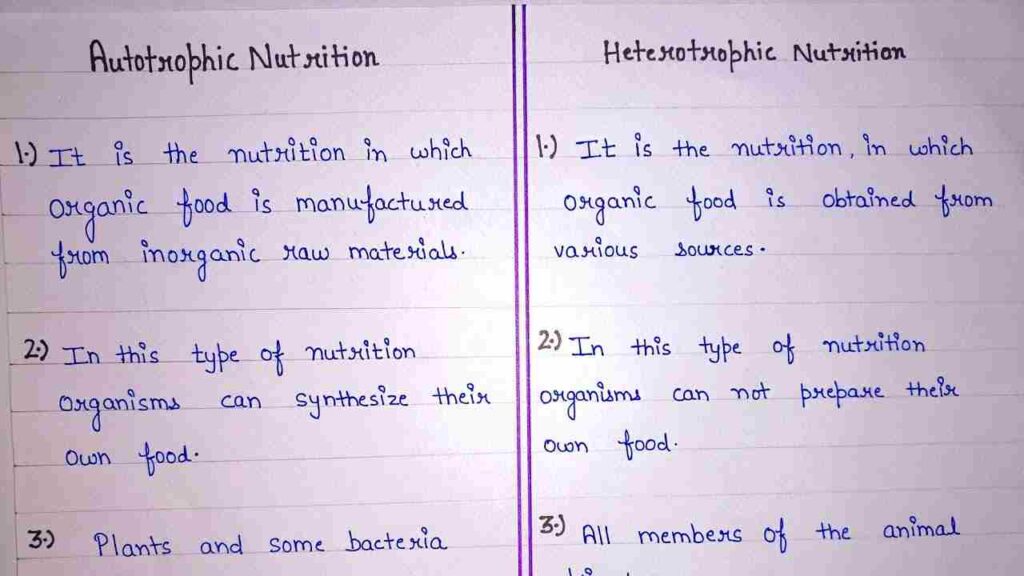
Key 12 Difference between Autotrophic and Heterotrophic Nutrition class 10
Welcome to the fascinating world of nutrition! In this enlightening read, we explore 12 Difference between Autotrophic and Heterotrophic Nutrition for class 10, shedding light on how organisms obtain their energy in distinct and remarkable ways. Let’s delve in!
Difference between Autotrophic and Heterotrophic Nutrition class 10
Autotrophic and heterotrophic nutrition are two contrasting modes of sustenance in organisms. Let’s explore the fascinating 12 Difference between Autotrophic and Heterotrophic Nutrition for class 10:
Energy Origin: Photosynthesis is how autotrophs produce their own food, and sunlight serves as their main energy source. Contrarily, heterotrophs get their energy from eating organic matter.
Carbon Source: Autotrophs produce their own organic compounds by using carbon dioxide from the environment as a carbon source. Contrarily, heterotrophs rely on naturally occurring organic carbon compounds that have already been formed.
Nutritional Independence: Because they can produce their own food, autotrophs have nutritional independence. However, heterotrophs rely on outside sources to meet their nutritional needs.
Energy Efficiency: Autotrophs directly convert solar energy into chemical energy, making them generally more energy efficient. Heterotrophs consume organic matter as secondary consumers, drawing energy from it, but this leads to energy loss due to metabolic processes.
Habitat Range: Autotrophs can survive in a variety of habitats, including aquatic and terrestrial settings. Because they can adapt to a variety of niches as long as there is suitable organic matter available, heterotrophs have a wider range of habitats.
Food Chains: Since autotrophs are the main producers, they serve as the basis of food chains. Higher trophic levels are occupied by heterotrophs as consumers.
Nutrient Cycling: Autotrophs are essential for the nutrient cycling process because they take in inorganic substances and transform them into organic ones. By rotting organic matter and releasing inorganic nutrients back into the environment, heterotrophs contribute to the cycle of nutrients.
Metabolic Processes: Autotrophs have specialised structures like chloroplasts and focus on photosynthesis as their main metabolic activity. Heterotrophs use a variety of metabolic procedures to obtain energy from consumed organic matter, including digestion and cellular respiration.
Evolutionary Significance: Autotrophic nutrition likely came first in the evolution of life on Earth before heterotrophic nutrition. The emergence of autotrophic organisms was a critical development in the diversification and complexity of life.
Production of Oxygen: As a byproduct of photosynthesis, autotrophs release oxygen into the atmosphere, which is necessary for the survival of heterotrophic organisms.
Food Availability: Because autotrophic organisms depend less on outside food sources, they are more resilient to changes in food supply. Heterotrophs are more vulnerable to changes in the availability of food because they depend on eating other organisms.
Ecological Functions: By converting solar energy into organic matter, autotrophs maintain ecological balance. By consuming other organisms, heterotrophs help to control population sizes and the cycling of nutrients.
By comprehending these 12 Difference between Autotrophic and Heterotrophic Nutrition for class 10, we can appreciate the intricate interplay between autotrophs and heterotrophs in the grand tapestry of life on our planet.
Also Read: Explore 10 Key Difference between Acquired and Inherited traits